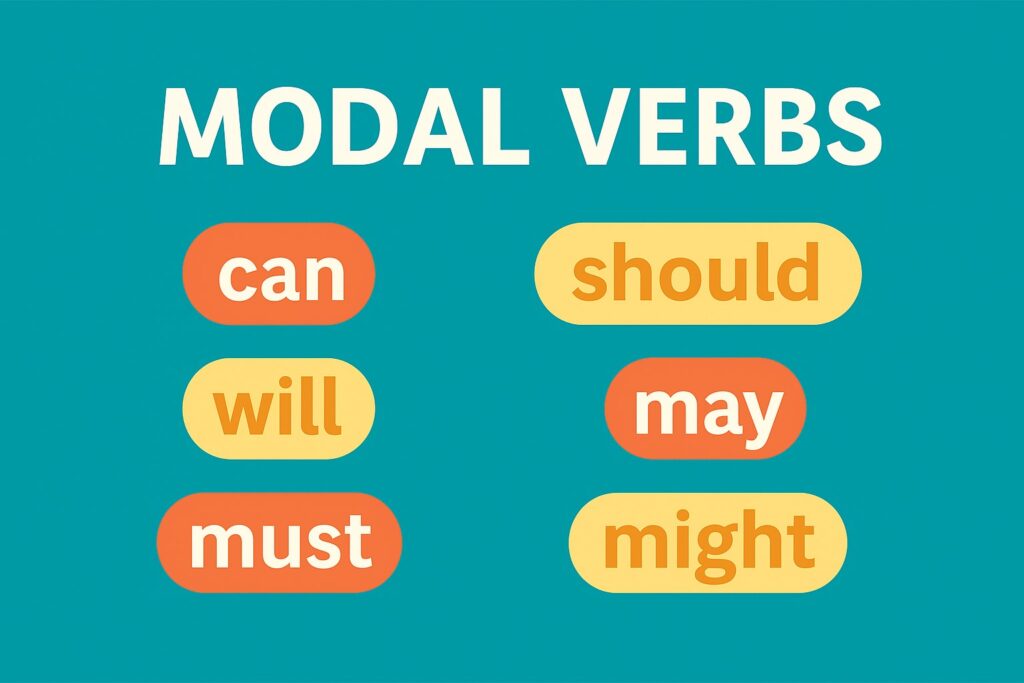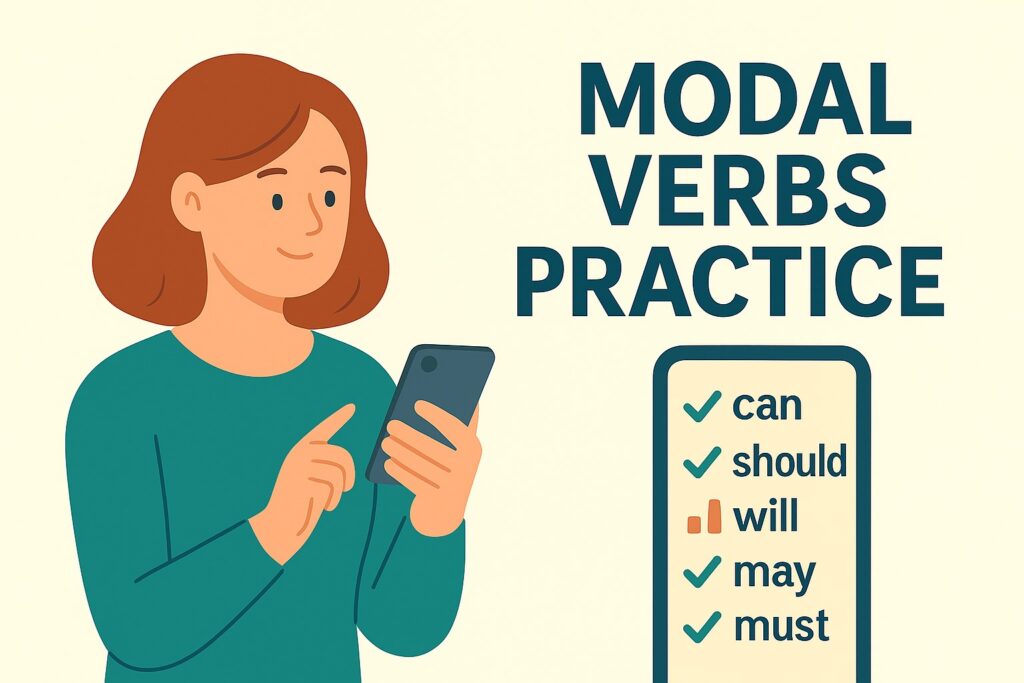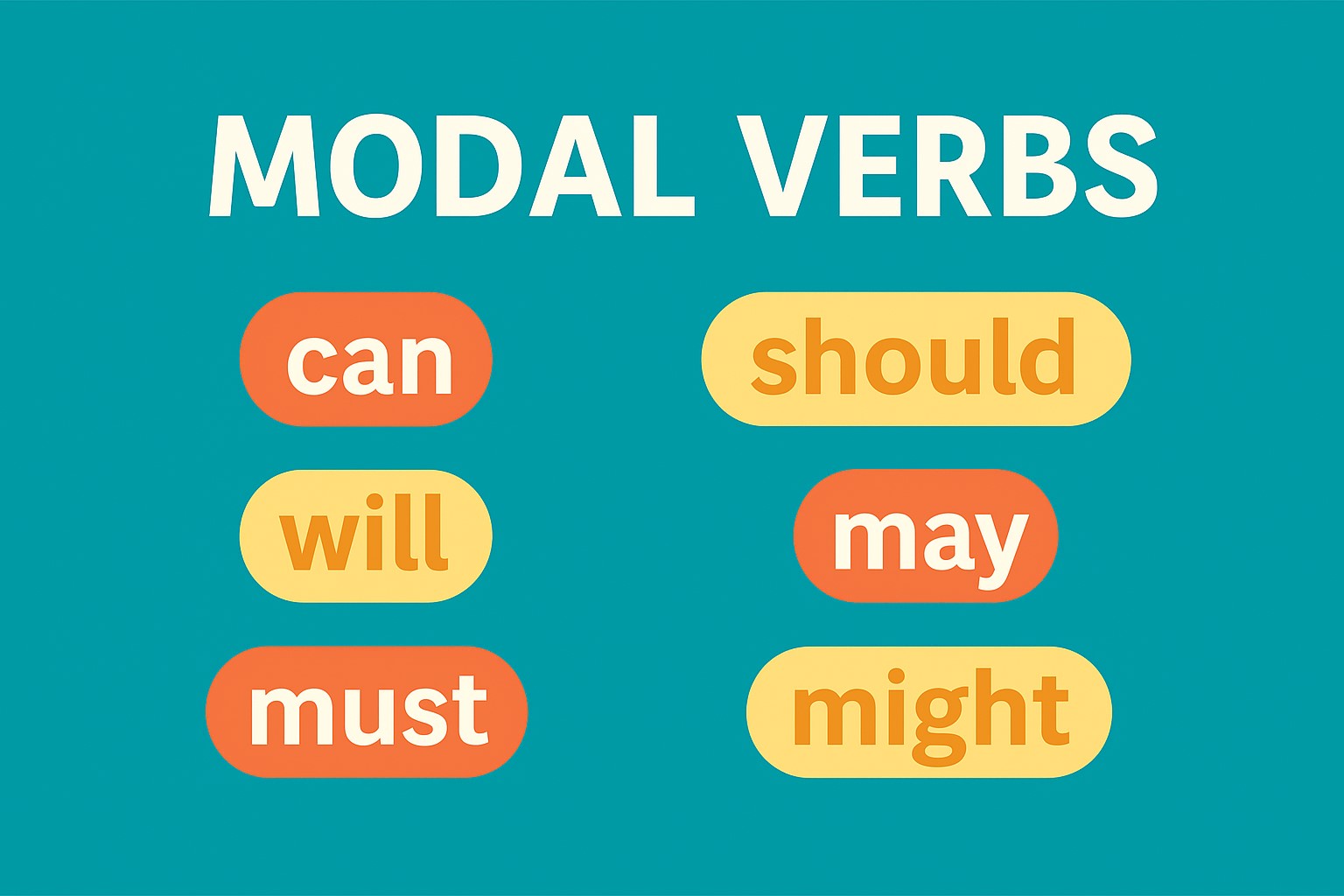Introduction
Ever wondered why mastering grammar feels like a never-ending challenge? For many students, understanding and using modal verbs can be particularly tricky. But what if there were a way to make this process easier and enjoyable?
This guide introduces a variety of interactive methods designed to help B2-level learners improve their grammar skills. From engaging games to creative exercises, these Modal Verbs Activities are classroom-tested and proven to boost retention. Whether you’re preparing for exams or simply aiming to enhance your fluency, these techniques can make a real difference.

Based on research from Cambridge English, activity-based learning is one of the most effective ways to grasp complex grammar concepts. For Brazilian students preparing for FCE exams, these methods offer a practical and fun approach to achieving success.
Key Takeaways
- Interactive activities make learning grammar more engaging and effective.
- Games and creative exercises are proven to boost retention.
- Classroom-tested methods ensure practical application.
- Activity-based learning is backed by Cambridge English research.
- Ideal for Brazilian students preparing for FCE exams.
Introduction to Modal Verbs
Modal verbs are essential tools for expressing nuanced meanings in English. They help convey permission, obligation, possibility, and ability concisely. Understanding their use is crucial for mastering advanced grammar.
There are nine core modal verbs: can, could, may, might, must, shall, should, will, and would. Each has a specific role in shaping the meaning of sentences. For example, “can” indicates ability, while “must” expresses obligation.
These verbs are unique because they don’t change form based on the subject. For instance, “She can” and “They can” both use the same verb structure. This simplicity makes them easier to learn but requires practice to use correctly in sentences.
Here’s a quick example of sentence transformation:
“It’s possible he went” → “He might have gone.”
This shows how modal verbs can add subtlety to your language.
For Brazilian learners, it’s helpful to compare these with Portuguese equivalents. For example, “dever” translates to “must” or “should,” while “poder” corresponds to “can” or “may.” This comparison can bridge the gap between the two languages.
-------- Continua após a publicidade --------
| Function | Example |
|---|---|
| Permission | “May I leave early?” |
| Obligation | “You must complete the task.” |
| Possibility | “It might rain tomorrow.” |
| Ability | “She can speak three languages.” |
To practice, try analyzing texts like Financial Times articles. Look for modal verbs and note how they shape the meaning. This exercise will improve your understanding and application of these versatile verbs.
Why Focus on MODAL VERBS ACTIVITIES?
Why do so many learners struggle with mastering these essential grammar tools? Research shows that 68% of ESL students avoid using them without proper practice. This hesitation often stems 0from confusion about their correct application by students.
For Brazilian learners, one common mistake is overusing “can” to ask for permission. For example, saying “Can I go?” instead of “May I go?” While both are understandable, the latter is more appropriate in formal contexts. Addressing these errors early can build confidence and accuracy.
According to Cambridge English, interactive methods can improve retention by up to 40%. Traditional approaches, like memorizing rules, often fail to engage students. In contrast, activity-based learning encourages practical application, making the process more effective and enjoyable.
Here are five real-world scenarios where mastering these tools is crucial:
- Job Interviews: Expressing abilities and obligations clearly.
- Academic Writing: Conveying possibilities and necessities.
- Social Interactions: Asking for permission politely.
- Professional Emails: Using formal language appropriately.
- Public Speaking: Communicating confidence and certainty.
For B2-level learners, the CEFR framework emphasizes the importance of mastering these grammar tools. Achieving this competency not only boosts fluency but also prepares students for advanced communication challenges.
Speaking Activities for Modal Verbs
Transform your speaking practice with these creative ideas. Engaging in conversations becomes easier when you incorporate interactive methods. These activities are designed to help students build confidence and accuracy in real-life situations.
Do You Have To…? Survey
This survey encourages learners to ask and answer questions using modal verbs. For example, “Do you have to wake up early?” or “Should you eat breakfast daily?” It’s a great way to practice forming sentences and understanding context.
Modal Madness Game
This 25-minute matching game uses cards with scenarios and corresponding sentences. For instance, one card might say “At a hospital,” while another reads “You shouldn’t shout.” Players match the scenario to the correct sentence, reinforcing their understanding.
Here’s how to make it more engaging:
- Use printable card templates for easy setup.
- Introduce scoring variations for competitive classes.
- Encourage students to create custom cards about Brazilian culture.
- Incorporate error correction techniques during gameplay.
| Feature | Description |
|---|---|
| Card Templates | Printable and customizable for different themes. |
| Scoring System | Adaptable for competitive or collaborative play. |
| Advanced Version | Create cards reflecting Brazilian culture. |
| Error Correction | Immediate feedback to improve accuracy. |
These activities not only make learning fun but also ensure practical application. Try them in your next class and see the difference!
Writing Exercises for Modal Verbs
Writing exercises are a powerful way to reinforce grammar skills and build confidence. They allow students to practice forming sentences in a structured yet creative manner. These activities are particularly effective for mastering nuanced grammar tools, making them ideal for B2-level learners.

Class Contracts
One engaging activity is creating class contracts. This exercise encourages learners to use modal verbs like “must,” “should,” and “can” to outline classroom rules. For example, “Students must raise their hand before speaking.” This not only reinforces grammar but also fosters a sense of responsibility.
Here’s how to make it more effective:
- Include peer editing to improve accuracy.
- Encourage students to suggest rules that reflect their home culture.
- Use a checklist to ensure all modal verbs are used correctly.
David’s Day Worksheet
The “David’s Day” worksheet is another excellent resource. It focuses on using “has to” and “doesn’t have to” in paragraph writing. For instance, “David has to finish his homework before he can play.” This exercise helps learners understand obligation and permission in everyday contexts.
Extension activity: Ask students to write about “My Ideal Day” using “shouldn’t” and “don’t have to.” For example, “I don’t have to wake up early today.” This adds a creative twist while reinforcing grammar concepts.
Common Portuguese interference issues, like saying “I have cook” instead of “I have to cook,” can be addressed through targeted feedback. Peer editing checklists are a great way to catch these errors.
For homework, students can write a short paragraph about their daily routines, focusing on the correct form of modal verbs. This ensures consistent practice outside the classroom.
Interactive Group Activities
Group activities can make learning grammar more dynamic and engaging. They encourage collaboration and practical application, helping students grasp complex concepts in a fun way. These methods are particularly effective for B2-level learners aiming to improve their fluency.
How To… Guessing Game
This game challenges learners to guess the correct way to complete a sentence. For example, “How ___ you ask for permission politely?” The answers could include “should” or “may.” This activity reinforces understanding while making the process enjoyable.
Here’s how to set it up:
- Prepare a list of incomplete sentences.
- Divide the class into small groups.
- Each group discusses and provides their answers.
- Review the correct responses together.
It’s Prohibited Worksheet
This worksheet explores real and fictional laws from around the world. For instance, “Can’t wear white after Labor Day (USA)” is a common myth. Comparing these with Brazilian laws adds a cultural twist, making the activity more relatable.
Extension ideas:
- Invent new school rules using modal verbs.
- Debate whether certain prohibitions should exist.
- Create a creative writing piece about an imaginary law.
| Activity | Focus |
|---|---|
| How To… Guessing Game | Sentence completion and context understanding. |
| It’s Prohibited Worksheet | Cultural comparison and creative writing. |
These activities enhance grammar skillsand prepare learners for real-life situations. They’re perfect for classrooms or study groups, offering a mix of fun and learning.
Role-Playing Scenarios
Role-playing scenarios offer a unique way to practice language skills in real-life contexts. These methods allow students to apply grammar tools in meaningful situations, making learning both effective and enjoyable. Whether it’s solving problems or predicting the future, these activities are designed to build confidence and fluency.
Agony Aunt Variations
In this activity, learners take on the role of an “Agony Aunt,” offering advice to fictional problems. For example, “What should I do if I’m late for work?” This encourages the use of probability language like “might,” “must,” or “can’t.” It’s a fun way to practice giving suggestions and understanding context.
Tarot Readers Card Game
This game uses downloadable cards with prediction prompts, such as “You might meet someone important.” It’s a creative way to practice future tense and probability language. The free PDF resource includes 30 illustrated cards, making it easy to set up and use in class.
Here’s how to adapt it for Brazilian learners:
- Incorporate Brazilian cartomancy traditions for cultural relevance.
- Encourage students to create their own prediction scripts.
- Use the activity to assess their understanding of probability language.
| Activity | Focus |
|---|---|
| Agony Aunt Variations | Giving advice and using probability language. |
| Tarot Readers Card Game | Predicting the future and cultural adaptation. |
These role-playing scenarios enhance grammar skills and prepare learners for real-life communication. They’re perfect for classrooms or study groups, offering a mix of fun and learning.
Music and Modal Verbs
Music has a unique way of making complex grammar concepts easier to grasp. For students, analyzing lyrics can turn a challenging topic into an enjoyable learning experience. Songs often use modal verbs naturally, providing real-world examples that are easy to understand and remember.
One great example is Taylor Swift’s “Should’ve Said No.” The lyrics, “You should’ve said no,” clearly illustrate the use of “should” for giving advice. Breaking down such songs helps learners see how these grammar tools function in everyday language.
Creating a Spotify playlist focused on songs with modal verbs is another effective method. Here’s a quick guide:
- Search for popular songs that include modal verbs.
- Organize them into a playlist for easy access.
- Encourage students to analyze the lyrics during study sessions.
Karaoke activities can also be adapted for grammar practice. Try a “missing modals” exercise where learners fill in the blanks while singing. This makes the process interactive and fun.
For Brazilian learners, incorporating local music like Ivete Sangalo’s “Pode Entrar” adds cultural relevance. The title itself uses “pode,” which translates to “can,” making it a perfect example for learning.
Research shows that musical mnemonics improve recall by 65%. This makes music a powerful tool for mastering grammar. Here’s a comparison of popular songs and their modal verb usage:
| Song | Modal Verb | Example |
|---|---|---|
| “Should’ve Said No” | Should | “You should’ve said no.” |
| “Can’t Stop the Feeling” | Can | “I can’t stop the feeling.” |
| “Pode Entrar” | Pode (Can) | “Pode entrar, pode ficar.” |
By integrating music into grammar lessons, teachers can create a more engaging and effective learning environment. Whether it’s through lyric analysis or karaoke, these methods make mastering modal verbs a memorable experience.
Creative Activities for Modal Verbs
Looking for fresh ways to make grammar lessons more engaging? Creative activities can transform the learning experience. These methods not only make lessons fun but also help students apply grammar tools in real-life situations.

Illustrate the Quote
This activity encourages learners to visualize and act out sentences using modal verbs. For example, “You must finish your homework before going out.” Students can draw or act out the scenario, making the grammar concept more tangible.
Here’s how to make it effective:
- Provide a list of sentences with modal verbs.
- Encourage creativity in illustrations or performances.
- Use peer feedback to reinforce learning.
Charades with Modals
Charades is a fun way to practice grammar. Students act out scenarios like “You’ve received a gift you don’t like” or “You arrive late for school.” The class guesses the correct modal verb used in the situation.
Scoring system:
- 2 points for using the correct modal verb.
- 1 point for accurately portraying the context.
Extension ideas:
- Create an expansion pack with Brazilian festival situations.
- Host an error correction tournament for added challenge.
- Assign homework where students create family charades videos.
For more creative ways to teach grammar, explore these interactive methods. They’re perfect for classrooms or study groups, offering a mix of fun and learning.
Practical Tips for Teaching Modal Verbs
Teaching grammar effectively requires strategies that engage students and simplify complex concepts. Here are some practical tips to help educators create a dynamic and productive classroom environment.
One proven method is the 5-step error correction framework. This approach helps students identify and correct mistakes without feeling discouraged. Start by noticing the error, then guide them to reformulate the sentence correctly. This technique fosters a deeper understanding of grammar rules.
Creating diagnostic tests is another essential tool. These tests allow teachers to assess students‘ strengths and weaknesses. Use the results to tailor lessons that address specific needs. For example, if many students struggle with expressing obligation, focus on exercises using “must” and “have to.”
Here’s a quick guide to structuring a lesson plan using the PPP model:
- Presentation: Introduce the grammar concept with clear examples.
- Practice: Engage students with interactive exercises.
- Production: Encourage them to use the concept in real-life scenarios.
Professional development resources like CELTA and Delta certifications can also enhance teaching skills. These programs provide advanced strategies for managing diverse classrooms and addressing common challenges.
Brazilian classroom case studies offer valuable insights. For instance, comparing Portuguese and English grammar structures can help students grasp modal verbs more easily. This cultural adaptation makes learning more relatable and effective.
“Effective teaching isn’t just about delivering content; it’s about creating an environment where students feel confident to explore and learn.”
By incorporating these strategies, educators can make grammar lessons more engaging and impactful. Whether it’s through error correction, diagnostic tests, or cultural adaptation, these methods ensure students master essential skills.
Want to dive deeper into verb usage and clear up common confusions that B2 students often face? Our complete guide on grammar exercises explores key verb pairs such as make vs do, used to vs would, and even tricky phrasal combinations like take off vs take up. It’s the perfect resource to complement your study of modal verbs.
Explore now: English Grammar Exercises: Master Common Verb Confusions and Practice (A2–B2 Level)
Conclusion
Mastering advanced grammar doesn’t have to be overwhelming. With over 15 activities tailored for B2-level students, you can progress confidently toward C1 proficiency. From role-playing to creative writing, these methods make learning both effective and enjoyable.
To support your journey, we’ve created a downloadable resource pack. It includes worksheets, games, and tips to help you practice modal verbs in real-life contexts. Share your favorite exercises in the comments—we’d love to hear your suggestions!
For Brazilian learners, remember that consistency is key. Celebrate small victories and keep practicing. With dedication, you’ll achieve fluency and unlock new opportunities. Start today and see how far you can go!
FAQ
What are some effective speaking activities for practicing modal verbs?
Engaging in activities like the “Do You Have To…? Survey” or the “Modal Madness Game” can help students practice using these words in real-life conversations. These exercises encourage active participation and improve fluency.
How can writing exercises help with understanding modal verbs?
Writing tasks such as creating “Class Contracts” or completing the “David’s Day Worksheet” allow learners to apply these words in structured sentences. This reinforces their understanding and usage in written communication.
What are some interactive group activities for teaching modal verbs?
Games like the “How To… Guessing Game” or the “It’s Prohibited Worksheet” make learning fun and collaborative. These activities encourage teamwork and help students grasp the nuances of these words in different contexts.
Can role-playing scenarios be useful for teaching modal verbs?
Yes, scenarios like “Agony Aunt Variations” or the “Tarot Readers Card Game” provide creative ways to practice. They simulate real-life situations, making it easier for students to understand and use these words effectively.
How can music be incorporated into teaching modal verbs?
Using songs that feature these words can make learning more enjoyable. Analyzing lyrics helps students identify and understand their usage in a natural, engaging way.
What are some creative activities for practicing modal verbs?
Activities like “Illustrate the Quote” or “Charades with Modals” combine creativity with learning. These exercises make the process memorable and help students internalize their usage.
What tips can help teachers effectively teach modal verbs?
Focus on real-life examples, use varied activities, and provide clear explanations. Encouraging students to practice in different contexts ensures a deeper understanding and better retention.




